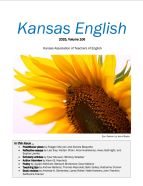Closing the Word Gap
Morphological Instruction Across Middle and High School Classrooms
DOI:
https://doi.org/10.62704/ke25oKeywords:
morphological awareness, vocabulary instruction, reading comprehension, academic language, English learners, word study, literacy equity, derivational morphologyAbstract
This literature review examines the effectiveness of explicit morphological instruction in improving vocabulary knowledge and reading comprehension for middle and high school students. Socioeconomic disparities in early language exposure contribute to a significant word gap, limiting students’ ability to access complex academic texts. Morphological instruction—focused on teaching roots, prefixes, and suffixes—provides students with strategies to analyze unfamiliar words and build word consciousness. Research supports the use of derivational morphology to strengthen comprehension, especially for English learners and struggling readers. The review draws on two theoretical frameworks—atomistic and abstractive—to explain how students process word structure. Evidence suggests that embedding morphology within meaningful literacy tasks leads to improved outcomes. Instructional recommendations include prioritizing high-utility morphemes, integrating vocabulary across content areas, and supporting teachers through professional development. Despite time constraints and the need for foundational training, morphology-based instruction offers a high-leverage approach to addressing literacy gaps and promoting academic equity.
Downloads
References
Downloads
Published
Versions
- 2025-11-13 (2)
- 2025-07-15 (1)
Issue
Section
License

This work is licensed under a Creative Commons Attribution-NonCommercial-NoDerivatives 4.0 International License.

